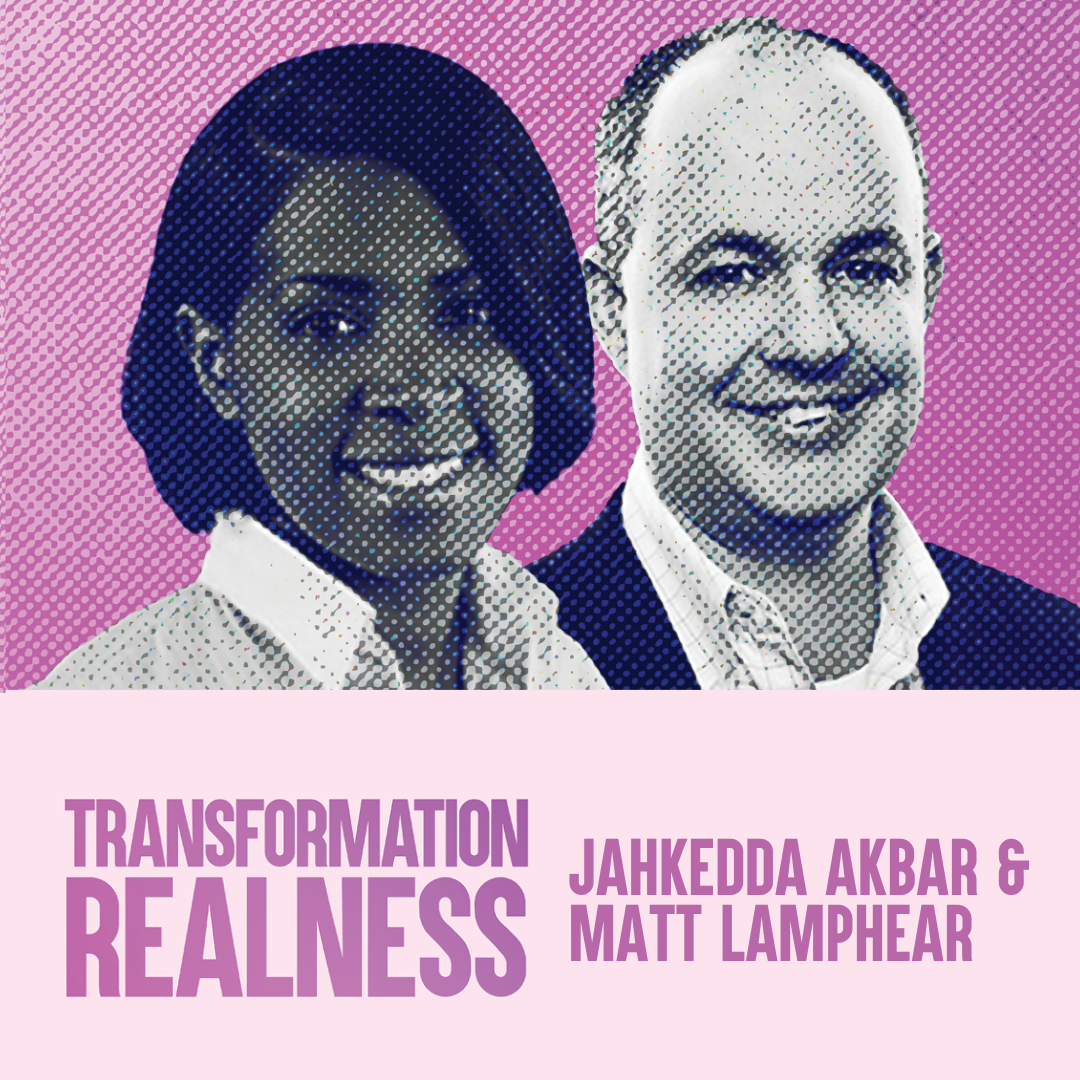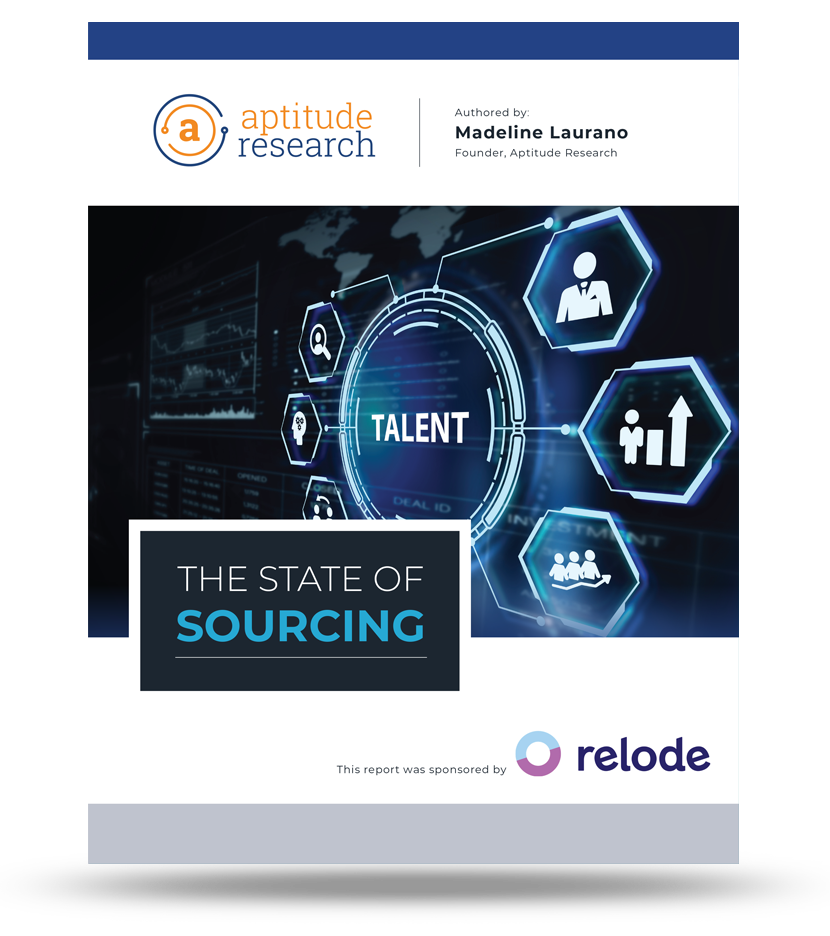On this episode of Transformation Realness, I’m joined by hiring tech trailblazers Jahkedda Akbar, Senior Vice President of Innovation at Radancy Labs, and Matt Lamphear, Head of the Digital Team at Radancy. Together, they unpack how Radancy is taking talent acquisition tech from “meh” to meaningful by blending data-driven insights with good old-fashioned common sense (and a touch of empathy).
This isn’t about shiny new features — it’s about solving real problems for recruiters and candidates alike. Our conversation hits everything from streamlining bloated tech stacks to tackling the ever-shifting whims of today’s candidates. Ready to take notes, HR leaders? Let’s go.
Staying Real: Why Innovation Must Be Grounded in Reality
Let’s talk about why so much of what passes for “innovation” in HR tech is just hot air. Radancy isn’t here for that. Instead, they’re laser-focused on what people actually need. “My main job is to work with our customers, our solutions engineers, [to] bring the voice of the customer back to our product team as they configure and determine, prioritize what to build next,” Matt says.
Radancy isn’t out here building tools that no one asked for. Instead of guessing, Radancy’s product strategy is based on real feedback from customers, advisory boards and even the complaints that come in through support tickets.
Radancy Labs cranks it up another notch. Jahkedda’s team combines big data with focus groups and qualitative research to dig into user behavior and context — with a tight focus on real people with real problems. “Oftentimes in technology we lose sight of the humans on the other side … So my team and I are really focused on, yes, big data, understanding trends, but contextualizing those trends,” she explains. In other words: No navel-gazing allowed. Radancy is about innovation that delivers, not just checking off RFP boxes.
Innovation isn’t about adding more features. It’s about delivering the right solutions at the right time. Jahkedda and Matt fundamentally believe that if they don’t understand the recruiter experience, they can’t build tools that make their lives better. HR leaders, take note — this is what staying real looks like in practice.
Don’t just chase the shiny new thing. Get feedback from your teams, your candidates and yes, even your customers. Stay connected to the reality of the work.
Candidate Motivations Are a Moving Target — And That’s Okay
Remember when candidates cared most about finding “interesting and challenging work”? Yeah, neither do we. The pandemic flipped the script on candidate priorities, and guess what’s at the top of the list now? Job security and compensation.
Shocker, right?
Jahkedda shares that Radancy’s been tracking candidate motivations since 2018, and that historic data has been a game-changer. “We could not have predicted that putting that in place in 2018 meant that we were going to have historic data to actually vet and validate based on this space we’re in today,” she says.
Here’s the kicker: These shifts aren’t slowing down. Jahkedda explains how candidate motivations swung wildly every 30 to 45 days during the early days of the pandemic — “I want purpose! No, wait, I want security! Actually, I want both!” — and they’ve kept evolving ever since. To keep up, employers need to be nimble. Messaging must adapt in real time, and employer branding can’t be a one-and-done exercise.
Matt adds that Radancy’s dashboards help clients track sentiment and motivations by department, location and job category — and even externally, across Radancy’s client ecosystem. “We give our customers dashboards so they can view not only how people are answering their own brand perception, their NPS score, their motivations … but you can drill it down by job and then you can compare it to others within Radancy,” Matt says.
Agility isn’t a buzzword — it’s a survival skill. Stay ahead by grounding your decisions in data and continuously adapting your approach.
Say Goodbye to Tech Chaos and Hello to Synergy
Let’s face it: You’re drowning in a sea of point solutions, and your recruiters are over it. Radancy gets it, and they’re here to throw you a life raft. Instead of cobbling together a dozen tools that don’t talk to each other, Radancy’s platform creates synergy by bringing it all under one roof — programmatic advertising, employee referrals, hiring events, CRM tools — you name it.
“Everything we’re doing is about taking the different channels that are available in our platform because we have had a history of investment and acquisitions,” says Matt, who is bringing those different resources together into a single powerhouse product. By reducing dependency on paid media and leveraging existing resources more effectively, Radancy helps clients get better results with less chaos. It’s all about making life easier for recruiters while delivering real value.
And can we talk about how Radancy uses challenge statements to keep things focused? Instead of telling their product team to “build this thing,” they define customer pain points and let the nerds (lovingly!) figure out the best solution.
Jahkedda and Matt know that the less time your team spends juggling tools, the more time they’ll have to focus on what really matters — like hiring great people.
People in This Episode
Transcript
Kyle Lagunas:
Hello, my little blueberries. It’s me. Welcome back. Here we are for another very special episode of Transformation Realness, which, as you know, is the only show all about people who are doing their best to make the world of work less shitty and they have the guts to share their story: the good, the bad and, most of all, the real. It’s produced in a partnership with Rep Cap and hosted by none other than the dashing, daring, totally cool Kyle Lagunas, Head of Strategy and Principal Analyst at Aptitude Research, the leading boutique research firm covering HR tech in transformation. Get into it.
In today’s episode I am joined by two absolute powerhouses from Radancy, Jahkedda Akbar, SVP of Innovation, and Matt Lamphear, Head of the Digital Team. We’re getting into the nitty-gritty of how they keep their product strategy sharp, balancing the human side of innovation with the demands of enterprise software.
These two are breaking down what it takes to prioritize customer needs, optimize tools and avoid the dreaded trap of building solutions in a vacuum. And, yeah, we’ve got thoughts on the future of talent acquisition. Spoiler, it’s not about more point solutions, although I think we’re still buying a lot of stuff. No, this conversation goes pretty deep, but it’s also packed with practical insights. Whether you’re trying to make sense of a shifting candidate motivation or figuring out how to leverage all the data you’re sitting on, this episode has something for you. So grab your notebooks or at least just listen very actively and settle in. This one’s all about innovation that actually delivers. Check it out.
Why don’t you guys introduce yourselves? Matt, do you want to go first?
Matt Lamphear:
Sure. Thanks, Kyle. Matt Lamphear, I oversee the digital team here at Radancy. My main job is to work with our customers, our solutions engineers, bring the voice of the customer back to our product team as they configure and determine, prioritize what to build next for our software.
Kyle Lagunas:
That’s super cool. It sounds like you might be an analyst in residence. That’s kind of what my job is, but I don’t have just one product team.
Matt Lamphear:
I will learn from you today. There we go.
Kyle Lagunas:
Yeah, yeah, yeah. Jahkedda, hi, who are you?
Jahkedda Akbar:
Hi, Kyle. Good to meet you. I’m Jahkedda Akbar. I’m the SVP of Innovation and I head up our Radancy Labs. At Radancy, in our Labs team, I’m really interested in understanding really the side of the user behavior. I think that oftentimes in technology we lose sight of the humans on the other side and we’re going technology down in product development. So my team and I are really focused on, yes, big data, understanding trends, but contextualizing those trends. So having a market researcher on our team who’s doing the qualitative side, really bringing to bear what’s happening from a macro trends perspective so that we can bring that together. That informs both our strategy and our innovation.
Kyle Lagunas:
No, that’s super cool. I mean, I love that because there is, as you all know, a real tendency in the solution provider space to innovate in a vacuum, to do that navel-gazing or to build that thing that you’d missed that you’re getting dinged for in RFPs. Or you’re getting all these feature requests and just responding. It’s really easy for your product strategy to get bogged down with just what is insulated in your organization. So I really love you guys for having this lens, make sure that you’re innovating for impact. You’re delivering solutions that your customers need. Yeah.
All right, but tell me about Radancy for those who don’t know, who are you? Because you guys have been around for a while, right? But we have had a rebrand, what was that, two years ago, three years ago?
Matt Lamphear:
A couple of years ago we renamed to Radancy, not a real word, so it was quite a process to pick a new name, but we are a software company. We continue to invest and expand our software, but we do so for the enterprise market and we do so with a specific lens. It’s not just helping customers hire faster and save money, whether it’s from reducing their key metrics, cost per application, cost per hire, but also reducing dependency on paid media because we have so many different channels that we can use, helping them maybe consolidate, not need so many point solutions. I do so-
Kyle Lagunas:
Are you saying that there are too many point solutions in talent acquisition?
Matt Lamphear:
Not at HR tech, I don’t think so.
Kyle Lagunas:
Oh, my God, girl, there is really so much. How long have you been at Radancy?
Matt Lamphear:
I don’t like that question because it’s close to 30 years now. It’s the only job I ever had other than Taco Bell and-
Kyle Lagunas:
You worked at Taco Bell?
Matt Lamphear:
I did work at Taco Bell. Do you eat Taco Bell? Do you get down on that Taco Bell?
Jahkedda Akbar:
So I will say that is my secret. I do eat Taco Bell. I know it’s-
Kyle Lagunas:
Oh, no, no. This is a very safe space. I went and ate at Taco Bell in the restaurant with my mom for my birthday this summer.
Jahkedda Akbar:
It’s fantastic.
Kyle Lagunas:
That Crunchwrap Supreme, it needs to be crunchy, it needs to be hot. I need that Baja Blast Zero. I want it crispy.
Matt Lamphear:
Yeah, well I remember when we would do different bets with friends and the loser had to do the $20 Taco Bell Challenge, which-
Kyle Lagunas:
… which used to really be something. That was a lot of Taco Bell.
Matt Lamphear:
… used to be a lot of Taco. Now it’s pretty easy. But to eat, not including drink by the way, not a drink, $20 Taco Bell. You had to eat it all in one sitting.
Kyle Lagunas:
Oh, my God. Well, now, anyway, we’re not going to go too far down that rabbit hole. All right, you’ve been at Radancy for a little while. What about you, Jahkedda, how long have you been there?
Jahkedda Akbar:
Well, so this is also a question that’s a little weird one for me. So I’ve been technically at Radancy for about 10 years now, but I am a two-time boomerang. So I’ve been on the solution provider side of the house and also a practitioner.
Kyle Lagunas:
Okay, work!
Jahkedda Akbar:
Left twice, went to two different consultancies to be a part of their candidate engagement team. And then I actually built the very first employer brand recruitment marketing function at a digital consultancy. So, yeah, I know it from both sides of the house.
Kyle Lagunas:
I mean, I’m really glad I asked the question because that street cred is so important. There are a lot of people that, I mean, that… TA is a really interesting and dynamic space. I always say that recruiting is one of those jobs that everyone thinks they can do better than you. And I also think that in the solution provider space, and I’ve seen it, I’ve lived it, they think they know what your problem actually is. And, for you, especially in your function, I think that, yeah, you’re running a team that is giving you context and giving you vision and helping you stay ahead and stay relevant. But then you are also having that understanding of how this is really going to go. I’m not trying to cook up problems to sell more product. I’m trying to lean in deeper and deliver more value. Am I putting the right words in your mouth?
Jahkedda Akbar:
Absolutely, yeah. When I think about our software, I always think about working with TA teams. So in my last role I was a part of the marketing communications function.
Kyle Lagunas:
Oh, really? Okay.
Jahkedda Akbar:
Yeah, and I actually partnered with TA. And what I remember saying to the TA executives all the time was, “I know that your number one concern is your recruiter burnout, is making sure that you have products that make sure they are efficient, that we’re supporting you as a recruitment marketing function.” And so I was oftentimes pulled in, we had an internal digital business transformation function. And so a part of my lens was also making sure the software that they had made sense, that we’re understanding the ROI. So then, coming back on this side of the house, I can bring that to bear and say, “Is our software doing what it needs to do with all of those things in mind?”
Kyle Lagunas:
No, honestly, that’s really interesting. And, I mean, there has been a lot of change at Radancy too. I think it’s super cool for them to have that recent experience. A lot has changed in the space. But tell me a little bit about what you guys are up to right now. What are you cooking up?
Matt Lamphear:
Everything we’re doing is about taking the different channels that are available in our platform because we have had a history of investment and acquisitions. So now in one platform you’ve got not just the programmatic advertising, but you’ve got the employee referrals, the hiring events, the CRM. And what is the relative contribution to each of those when you-
Kyle Lagunas:
In-person events, virtual events?
Matt Lamphear:
Both of them, both of them.
Kyle Lagunas:
Yeah.
Matt Lamphear:
Yeah. We’ve been integrating on our roadmap, all of it together. Unified profile in the CRM, making sure that profile has what events they attended, who they were referred by, what they were rated on. Making sure that any advertising external budget includes both individual jobs, branding, but also event promotion. So we think there’s a lot of synergies there. And I feel like I’m a kid in the candy shop because there’s a lot more connections that we can make. We want to do more predictive campaigning when, here’s my goals, here’s my timeframe, here’s what I would expect each individual channel to contribute. And that helps me, at least, where do I start? And then optimize along the way so we have that data. We can get that.
Kyle Lagunas:
I mean, that’s what’s so… Look, I’ve been an industry analyst for 15 years. I was born when you started at Radancy… JK!
Matt Lamphear:
That wasn’t nice.
Kyle Lagunas:
No, but I have been watching for a while and it’s been interesting and that’s why I keep doing it. I stepped over to the practitioner side to see if I knew what I thought I knew and I didn’t. There’s a lot I didn’t know, right? But we have literally never seen this much change this fast. And I’m not just talking about the impact of Covid and the scale up and the scale down and the hire up and then hire… all of that chaos. But then also the technology innovation that’s happening, the way that we have completely shifted human behavior. We live on these devices and on these screens so much more than we ever have before. So you’re a kid in a candy shop too, but how do you zero in on, “Where am I going to… What am I?” You can’t do it all, right? How are you guys zeroing in on, “What are we going to prioritize? What are we going to get done?”
Matt Lamphear:
We’re doing it more efficiently every year. And this year we did a really good job with Jahkedda’s help in getting all the feedback, whether it was from customers direct, from our software advisory boards, to the individual tickets that are entered into our backend systems and what product managers are being asked for. And we, basically, with the help of generative AI, we change those into challenge statements and those challenge statements then are delivered to the product team. And of course you prioritize the challenge statements, but that’s what they work off of and then make solutions.
Kyle Lagunas:
Challenge statements, talk to me more about that. I haven’t heard of it before.
Matt Lamphear:
Yeah, so from a product development standpoint, I’ve worked with the product team enough, they don’t want you to tell them, “Hey, build this.”
Kyle Lagunas:
Okay.
Matt Lamphear:
They want you to say, “What is the challenge of the customer?”
Kyle Lagunas:
Those nerds are so self-important.
Matt Lamphear:
Yeah, they’ll actually kick it back…
Kyle Lagunas:
But let me tell you…
Matt Lamphear:
“Don’t tell me what to build here, but just tell…”
So we provide that and we help…”Hey, sales, tell us which of these challenge statements are most important, you hear most often during the sales process.” And so we provide the product team with a prioritized list of challenge statements and then they know the tools and the data that they have and they build the roadmap off of that.
Kyle Lagunas:
Okay.
Matt Lamphear:
So I’m actually proud of how far we’ve gotten this year, and every year we get a little better. And so 2025 is going to be pretty awesome.
Jahkedda Akbar:
You can get to this place where you are evolving based on the things that you’re hearing that are problems and issues and that’s how we create the challenge statements. What my team does is we also go in and we’re talking to candidates. We’re actually doing focus groups to understand, “How do you feel about different solutions that we’re actually putting out?” And so a massive important part, again coming back to the beginning, is that we’re not innovating in a silo, that we’re actually understanding how does this work in real time? None of us work in high volume situations. Maybe we did when we were 17. So talk to someone who actually works that job and understand what makes the most sense for them. Bring that to bear when we’re building out a roadmap.
Kyle Lagunas:
I mean, I really love to hear that too, because just like the recruiter experience has changed, the candidates, their experiences have shifted a lot too. Well, and look, the employment environments that we are in right now are also way different than they were two years ago. So when we were getting ready, you guys were talking about a couple of concepts you are working on. Do you want to share some of that? I think, what did you say, the candidate motivation research? Yeah, talk to me about that.
Jahkedda Akbar:
Sure, I’ll talk a little bit about that. So, interestingly enough, we developed out this solution back in 2018, and it was really to mirror the information we would derive from both our customers in terms of their employees, understanding what motivates them, and the external market. We wanted to have a real-time solution surveying candidates all the time to understand how are motivations changing over time. We could not have predicted that putting that in place in 2018 meant that we were going to have historic data to actually vet and validate based on this space we’re in today.
Kyle Lagunas:
Ah, yeah, that’s cool.
Jahkedda Akbar:
Amazing. So in 2020 what I saw is every 30 to 45 days motivations were swinging wildly. It would be like, “I want purpose. No, I want security. No, I want this and that.” And so what we’ve been seeing over the past, let’s say, five or six years since the pandemic, is that motivations continue to change along every single new thing, including technology. So it’s return to office, it’s the economy, it’s the great resignation, and then ChatGPT and candidates and job seekers are thinking, “Well, how do I upscale myself? How do I remain relevant?” And so really paying attention to those key factors. What we’re seeing that is on average was about a 27% decline from when things were great in 2019. The top motivating factor was interesting and challenging work. Now, fast-forward to now, that’s really come down to maybe the third or fourth most important motivator. So that, for us-
Kyle Lagunas:
I’ll work on anything for a paycheck. Yeah, yeah, yeah, yeah.
Jahkedda Akbar:
So that is what keyed us into this idea of, “All right, well we have to be more agile with messaging-“
Kyle Lagunas:
Because your customers do too.
Jahkedda Akbar:
Absolutely. And so getting ahead of that for our customer-
Kyle Lagunas:
They’re operating on that front line every day.
Jahkedda Akbar:
And so your brand isn’t changing, but how are we understanding the motivations aligned with your brand to make sure that whole right message and market at the right time, if we don’t know what the message is and what the right time is then how do we get ahead [of] it? So it’s the message, it’s being able to be agile about delivery and then optimization across the full platform.
Kyle Lagunas:
I love it. It’s also giving data to inform these things.
Jahkedda Akbar:
Absolutely. Absolutely.
Kyle Lagunas:
Because, look, marketers love to think of new things. “What if we spin this? What if we spin that?” But if I can actually go and say, like, “Hey, I actually am monitoring this thing, I’m seeing this thing. We need to respond to this thing,” then you are actually going to get, I think, more alignment and buy-in for that continuous adaptation, right? If I say, “Hey folks, our EVP is not relevant, and I’m not just telling you that our recruiters are not getting signals of response rates. It’s not just that. I’m actually seeing in our sentiment analysis that people are not caring about these things that we are pushing. It’s just not landing.” You know what I mean? I might have that anecdotal perspective, but to move a ship in that much, that big of a way, anecdote is not going to be enough.
Matt Lamphear:
It’s even down to not just the time level, but it’s the location and department level too. So when we do have this data, we give our customers dashboards so they can view not only how people are answering their own brand perception, their NPS score, their motivations, are they finding what they want on the career site, but you can drill it down by job and then you can compare it to others within Radancy, because we use the same question set across all our clients so they can put in context, “Is this a good or is this a bad score?” And then our technology allows us to deploy whatever messaging needs to be deployed per job category…
Kyle Lagunas:
Yeah. So what I really like about that is that is the kind of personalization that I’m looking for. I’m not just looking for it to remember my name last time I applied, right, and to show me what job I applied for. I want it to serve up the content that’s relevant to me.
Matt Lamphear:
Yeah. And we need to tie what is their main motivation to what can the company offer, tie those two things together and make sure-
Kyle Lagunas:
Oh, that’s really sophisticated. And look, I mean, I know that you guys have been on a transformation journey yourselves and positioning more as that technology player, but I think that your deep roots in delivering recruiting solutions, having that whole portfolio of capabilities, you can say, “We’re seeing an opportunity to make an impact and we have the tools to activate on all of this across multiple channels, multiple assets.” Right? Systems….
Matt Lamphear:
We want to partner with our customers, make it successful as possible. So we pride ourselves on not set it and forget it, “Here’s our software, but here’s the messaging you should deploy through that software. And here’s why.”
Kyle Lagunas:
I mean, honestly, it sounds super interesting. I mean, I can talk about anything all day, but is there anything else that you guys wanted to make sure that we landed on today? Anything you wanted to bring up?
Matt Lamphear:
Well, I think the big message here is we always want to make sure that we’re helping reduce the dependency on paid media. And there’s really a hierarchy to do that. And our solution allows us to make sure you’re looking at your past candidates, make sure you’re looking, leveraging your employees, make sure you’re utilizing everything at your disposal. And then when paid media comes, we’ve got programmatic to do it. It’s the story that we’re telling. It’s one source of data, one reporting less work for your IT team, less report work for your legal team, your procurement team. So it’s really bundled up nicely together. We’re excited about the future too. We’re going to continue to push.
Kyle Lagunas:
I think so. I mean, look, there’s a big push for efficiency, right, and cost-cutting, but it’s not just face value, move faster and work cheaper. It’s like, “Get better, get more excellent.” You need the right data in place. You still need the right tools in place, and I think we need to be better stewards of the resources we have. It sounds like you guys are enabling your clients to do that.
Matt Lamphear:
And you need to measure it consistently.
Kyle Lagunas:
Oh, I mean, literally, I felt like during Covid we backed off big time on some of our recruiting scorecard, recruiter performance metrics, because we didn’t want anybody to leave, right? And guess what? When the business came and said, “What are all these people doing?” You’re working hard. You have no data to show them. They’re like, “Okay, well, they’re all gone.” So I think that’s also it, too. You guys are empowering your customers to be excellent in this new era of, look, you’ve got to know your stuff. So it’s super cool. You guys have a lot to offer.
Matt Lamphear:
Appreciate that.
Kyle Lagunas:
Thanks for coming and spending time with me.
Matt Lamphear:
Appreciate the time. Thank you.
Kyle Lagunas:
Okay, that is a wrap, another episode of Transformation Realness. Big thank you to Jahkedda and Matt for coming on and sharing how Radancy is raising the bar with smarter, more intentional tech. From turning candidate motivation trends into actual insights to keeping innovation grounded in real-world insights, they reminded us that solving the right problems requires staying curious, connected, and being adaptable.
The takeaway for me, it’s not just about building solutions, it’s about building the right solutions and continuously fine-tuning along the way. Whether you’re on the tech side or leading a talent team, it’s pretty clear the days have set it and forget it are over. They’re behind us. They need to stay behind us. Bye. Innovation is a moving target, and those who stay nimble and aligned will be the ones that are leading the way.
Thank you as always for spending some time with me and my little friends. I’ll catch you on the very next episode of Transformation Realness. And, until then, stay bold, stay curious and, above all, stay real.








